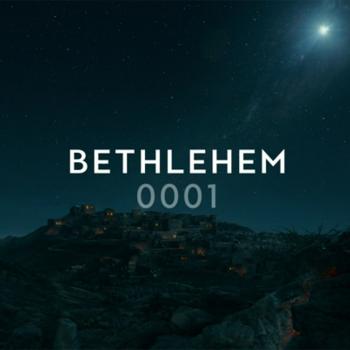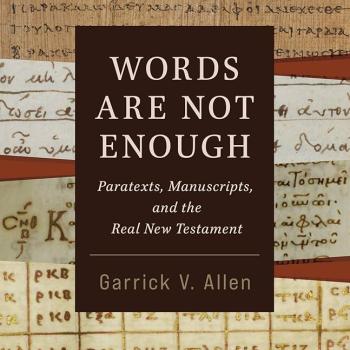I am delighted to have been given the opportunity to participate in a blog tour organized by TLC, focused on Candida Moss' book The Myth of Persecution: How Early Christians Invented a Story of Martyrdom
. Moss' book begins with modern perspectives on persecution and martyrdom, including examples which have made international news, and then turns to the question of whether and to what extent the earliest stories of Christian martyrdom, which lie in the background and underpin the view that Christians have always been widely persecuted, reflect historical reality. The main motivations for Moss doing so are to accurately reflect the historical and literary evidence, but also in the process to address the way the rhetoric of martyrdom and persecution continues to have a detrimental impact on the present day.
The book is written for a general audience by a scholar who is seeking to address contemporary issues as well as popular beliefs about the past. The historian or other scholar reading the book may wish that there had been even more detailed discussion of precisely what we feel we can know, and with what degree of certainty, in the various accounts and sources. But for the intended audience, painting with broader strokes in most places, with increased detail on occasion when needed, is surely the better choice, and it is precisely what the book offers.
The book begins and ends with a focus on the contemporary relevance of the issue, and so I will address that aspect first, even though some of the examples as well as my favorite quotations come from the conclusion. Moss provides specific examples of claims to be facing persecution, setting familiar examples from an American context alongside actual violence taking place against Christians in other parts of the world at the same time. One impact of the exaggerated rhetoric in the United States is that it desensitizes people, so that genuine atrocities fail to elicit the response of outrage one might expect (p.258). In addition, the rhetoric of persecution closes the door to the possibility of working together, and of reasoning together, in ways that leaders of the Christian church exemplified even in the midst of what was supposedly the “age of the martyrs.” The alternative is a frightening one that we see instances of regularly in our time (p.256):
Heaven help us if this worldview, which pervades political commentary and activism as well as religion, wins the day. The myth of Christian martyrdom and persecution needs to be corrected, because it has left us with a dangerous legacy that poisons the well of public discourse. This affects not just Christians, but everyone. We cannot use the mere fact that we feel persecuted as evidence that our causes is just or as the grounds for rhetorical or actual war…Once we realize that feeling persecuted is not proof of anything, then we have to engage in serious intellectual and moral debate about the issues at hand.
The treatment of the historical evidence in the book starts out by swinging the pendulum far in a counterbalancing direction. At times it may seem as though it is being swung too far the other way. But often when addressing a general audience, it is necessary to emphasize just how little is certain, and how much could possibly be fictional, before seeking to construct a historically plausible portrait of events with carefully chosen evidence. With some taking much later legends about martyrs as “gospel truth,” this challenge is necessarily pointed and emphatic. Even so, Moss is careful to emphasize that there may be a kernel of truth behind some of the later legends. Nevertheless, what we often do not know is what the precise charges were, what those on trial said, and thus whether we are dealing with persecution or prosecution. Moss emphasizes this distinction in numerous places. If Christians were brought to trial and even executed for breaking laws which were not aimed exclusively or even primarily at them, is this “persecution”? (See e.g. pp.150-151).
Moss does a fantastic job of illustrating points about ancient evidence and rhetoric by using modern examples and illustrations – from doubts about a widely-circulated version of the dialogue that allegedly preceded the murder of Cassie Bernall, to baseball as a “religion,” to the function of appealing to the Founding Fathers.
One of the most interesting details highlighted in the book (which is rich in interesting details) is the fact that most of the martyr stories we have, in the forms in which they are famous, stem from the Constantinian era, after the “age of the martyrs” had ended. And so then, rather like now, we see not only the exaggeration of the extent of persecution in some instances, but the use of stories of martyrdom by those not facing it, to leverage them for political advantage and religious power. Some of the prime examples of apocalyptic literature from the early Christian centuries may reflect not the heat of intense persecution, but the identification of more mundane sorts of disagreement as on an equal footing with the violence and execution a relatively small number of people had previously faced (see esp. pp.244-245).
One point at which I felt that there was somewhat of a tension in the work is when Moss points out that, during the time when Acts depicts Saul/Paul involved in persecution, technically Paul could not be said to have persecuted Christians, for the simple reason that the term was not yet used for this movement (pp.133-134). Yet the main point of chapter 1 was precisely that there could have been martyrs even before that term began to be used to denote Christians who bore witness before authorities even at the cost of their lives. While Moss' point that what Paul was involved in was inner-Jewish conflict is a legitimate and accurate one, the way the argument is formulated makes it seem as though the case is being excluded on a technicality, rather than because it was not persecution aimed at individuals who can legitimately be called Christians even if anachronistically. Since Moss is not denying that there were occasionally people who faced persecution, making this somewhat weaker point seemed to me unnecessary. Nevertheless, this point does not significantly detract or distract from the book's case.
One lasting message of the book is that, for the most part, most Christians in the first several centuries of the Common Era did not face the threat of violence or execution because of their faith. An important piece of evidence for this is found in the few instances of martyrdom themselves. Often, when persecution occurred, it was aimed at high ranking Christians and leaders of the church. But they very existence of Christians of high rank and status illustrates the possibility for Christians to live and thrive before and then again after these relatively isolated instances of persecution. Another lasting message of the book is that, for reasons not only of historical accuracy, but also because of the use and abuse of the rhetoric of martyrdom even by those who face no threat of violence and who may even have access to political and social power, there is a need to challenge the ideas that make up the “myth of persecution” that the title talks about. Persecution is not only a myth in the sense that it involes stories which are not entirely true, if at all. It is also a myth in the sense that stories of persecution shape a worldview that thinks in terms of binary opposites, with the assumption always being made that one's own side is right. The specific examples Moss provides in the book, including the Circumcellians who terrorized other Christians and the Christians who actively sought to become martyrs, make clear that the category of martyrs and would-be martyrs included not only people that Christians today would find admirable, but also ones that we would consider to have acted in repugnant ways.
I truly hope that this book will help change the way debates have tended to be framed in our time. The assumption that opposition confirms our rightness is a legacy of Christianity's stories of martyrs and persecution. It is a legacy that has been coopted for the purpose of manipulating others for as far back we can trace. I hope it is a legacy that many Christians and others will work together to make a thing of the past.
I am extremely grateful to Candida Moss for having written this book, and to TLC Book Tours for having provided me with a gratis copy and given me the privilege of participating in this multi-blog discussion of this important volume. I highly recommend it!













